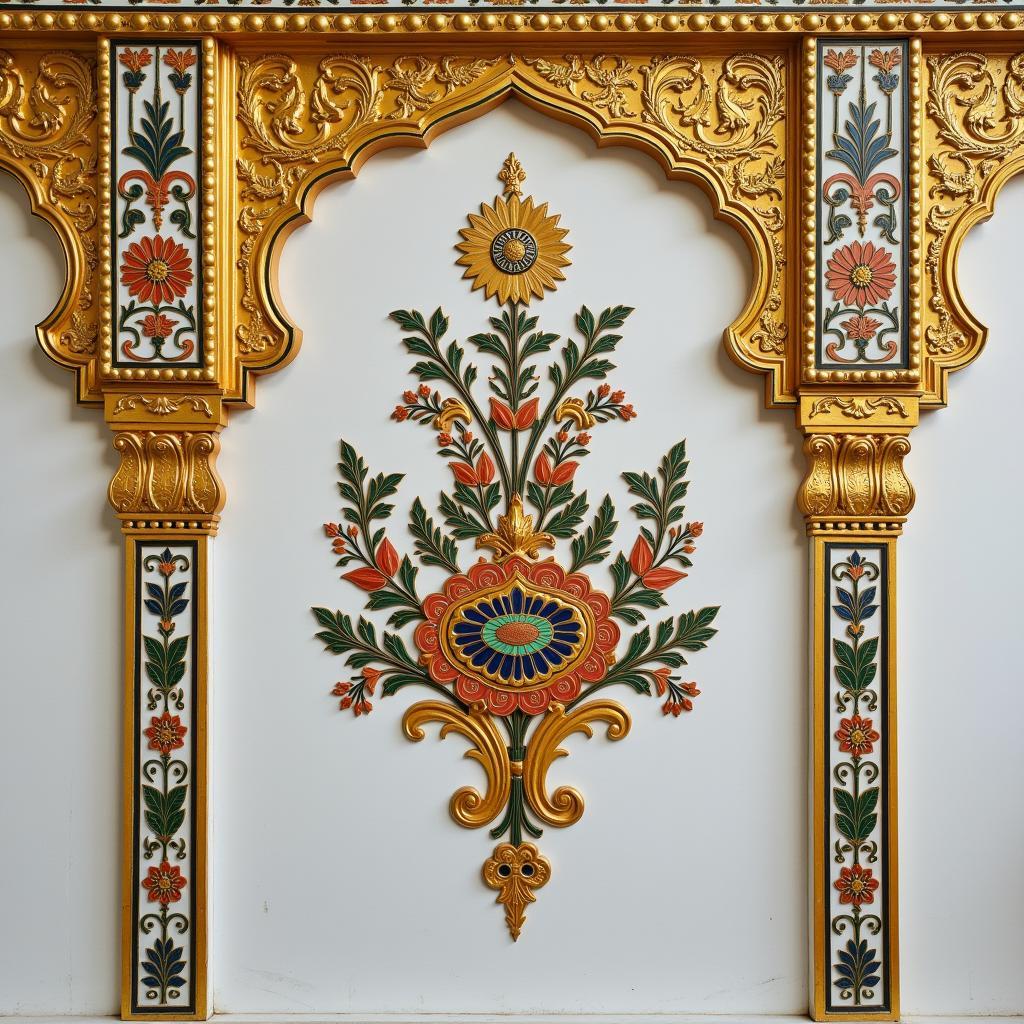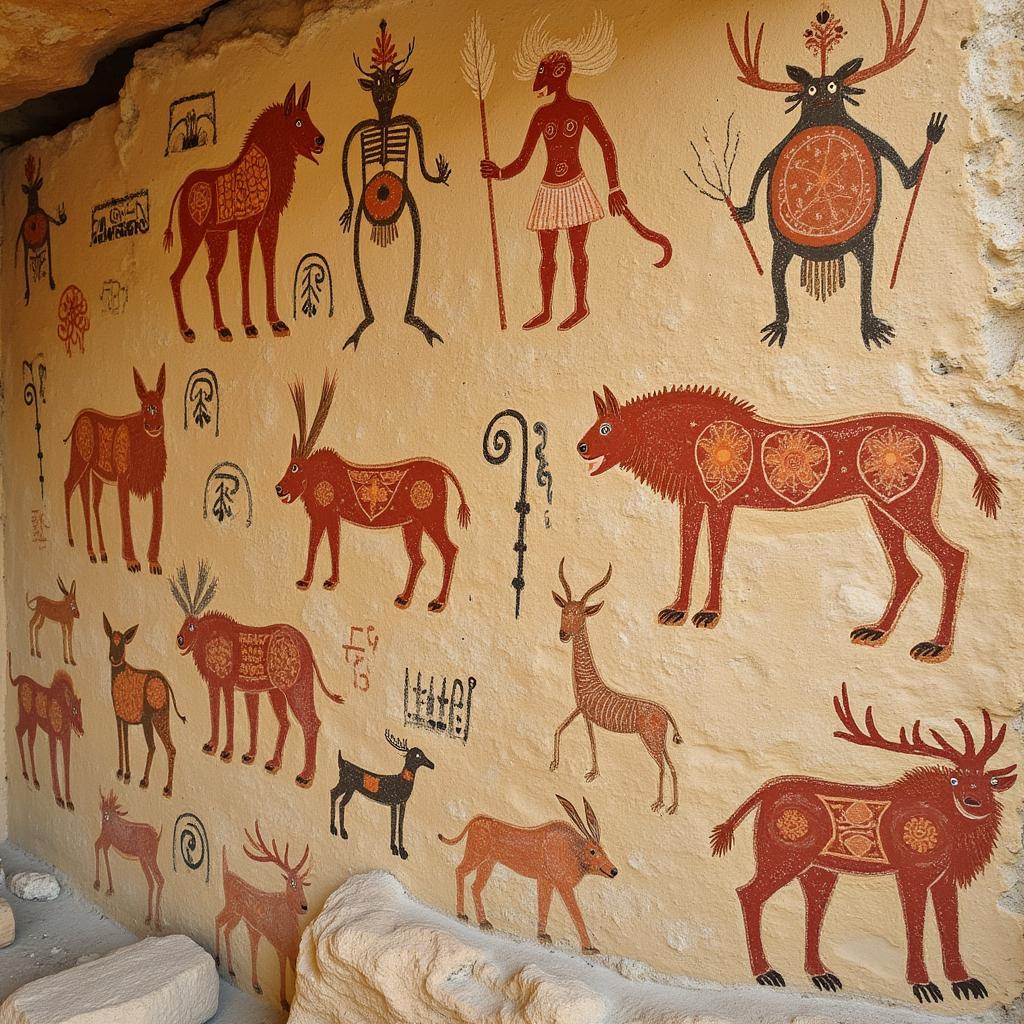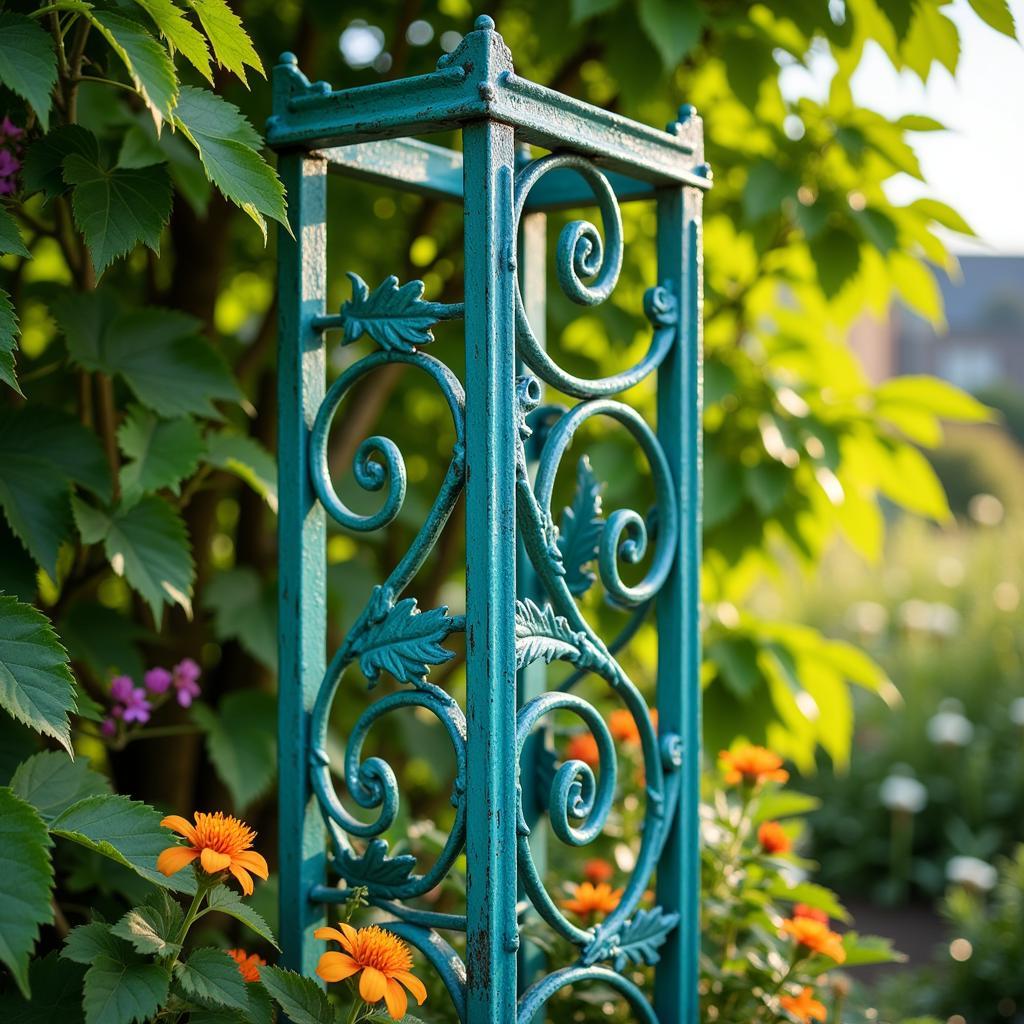Exploring the Golden Temple Art: A Digital Artist’s Perspective
The Golden Temple, or Harmandir Sahib, is a breathtaking spectacle of spiritual significance and architectural marvel. But beyond its shimmering exterior, the Golden Temple Art offers a rich tapestry of intricate details, symbolic motifs, and historical narratives. Let’s delve into the fascinating world of Golden Temple art and explore its various forms, from the inlaid marble to the delicate frescoes. After this introduction, we’ll dive deeper into the specific types of art you can find at the Golden Temple.
The Golden Temple’s art is a testament to the devotion and skill of countless artisans over centuries. The intricate designs, incorporating floral patterns, geometric shapes, and religious iconography, create a truly immersive spiritual experience. Whether you are an art enthusiast, a history buff, or simply seeking spiritual enlightenment, the art of the Golden Temple has something to offer. See how it relates to other religious artwork, such as lds temple art.
Unraveling the Symbolism in Golden Temple Art
Every element of the Golden Temple’s decoration carries a deeper meaning, contributing to the overall narrative of devotion and spirituality. The prominent use of gold, for instance, symbolizes divinity and purity. The lotus flower motif represents spiritual awakening, while the intricate patterns symbolize the interconnectedness of all things. Understanding these symbolic layers adds a richer dimension to the appreciation of Golden Temple art.
The use of marble inlays, a prominent feature of the Golden Temple’s architecture, showcases the Mughal influence on Sikh artistry. These intricate designs, often featuring floral motifs and pietra dura work, create a stunning visual contrast against the gold background. What’s truly remarkable is the meticulous craftsmanship involved in creating these intricate pieces.
 Intricate Marble Inlay Details at the Golden Temple
Intricate Marble Inlay Details at the Golden Temple
The Architectural Splendor: A Canvas for Golden Temple Art
The architecture of the Golden Temple itself serves as a magnificent canvas for its artistic embellishments. The central structure, the Harmandir Sahib, is surrounded by a shimmering pool known as the Amrit Sarovar, which adds to the ethereal beauty of the complex. The four entrances to the temple symbolize openness and acceptance, welcoming people of all faiths.
The gold plating that adorns the Harmandir Sahib is not merely decorative; it’s a powerful symbol of spiritual purity. The reflection of the temple in the surrounding pool creates a mesmerizing spectacle, enhancing the spiritual significance of the site. This architectural marvel, combined with the intricate artwork, creates a truly unforgettable experience. You might also be interested in other architectural art forms, like tile art.
The Influence of Mughal Aesthetics on Sikh Artistry
The Golden Temple art beautifully blends Sikh traditions with Mughal aesthetics. The pietra dura technique, a hallmark of Mughal art, is evident in the intricate floral inlays that adorn the marble surfaces. This fusion of artistic styles reflects the cultural exchange and historical context of the time.
“The Golden Temple’s art is not just about aesthetics; it’s a testament to the rich cultural exchange between Sikh and Mughal artistic traditions,” says Dr. Anika Sharma, art historian specializing in South Asian art. The influence is palpable in the detailed floral motifs and the intricate pietra dura work.
What are the primary materials used in Golden Temple art?
Gold, marble, and precious stones are the primary materials used in the creation of Golden Temple art.
How does Golden Temple art reflect Sikh beliefs?
Golden Temple art incorporates symbolism that reflects Sikh beliefs, such as the lotus flower representing spiritual awakening and the use of gold signifying divinity. Think of the powerful symbolism present in other religious art, such as dog art sculpture.
The Artistry of the Frescoes: A Narrative in Color
Beyond the gold and marble, the Golden Temple features vibrant frescoes that depict scenes from Sikh history and mythology. These detailed paintings, often hidden in the upper reaches of the temple, add another layer of narrative richness to the overall artistic experience. They tell stories of devotion, sacrifice, and spiritual triumph.
“The frescoes are like visual scriptures, narrating the stories and teachings of Sikhism to those who observe them,” notes Jaspreet Singh, a renowned Sikh scholar. They provide a glimpse into the rich tapestry of Sikh history and spirituality. Even more contemporary art forms, like metal cut out art, can tell compelling stories.
 Golden Temple Architectural Overview with Pool Reflection
Golden Temple Architectural Overview with Pool Reflection
Golden Temple Art: A Timeless Legacy
The Golden Temple art is more than just decoration; it’s a living testament to Sikh devotion and artistic brilliance. It offers a powerful and immersive spiritual experience, inviting contemplation and reflection. The intricate details, rich symbolism, and historical narratives woven into the art make the Golden Temple a truly unique and inspiring destination. The Golden Temple’s art reminds us of the enduring power of human creativity and the profound connection between art and spirituality.
FAQ
- What is the significance of gold in Golden Temple art?
- What are some common motifs found in Golden Temple art?
- How does Mughal art influence the Golden Temple’s aesthetic?
- What stories do the frescoes in the Golden Temple tell?
- What are the main materials used in creating Golden Temple art?
- How can I learn more about the history of Golden Temple art?
- Are there guided tours available that focus on the art and architecture of the Golden Temple?
Looking for more insights? Explore other articles on our website about various art forms and cultural heritage. Need assistance? Contact us at Phone Number: 02462573573, Email: danteum@gmail.com or visit us at Savico Megamall, 7-9 Đ. Nguyễn Văn Linh, Gia Thụy, Long Biên, Hà Nội 10000, Việt Nam. Our customer service team is available 24/7.



